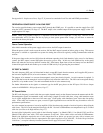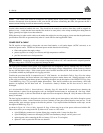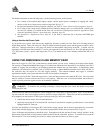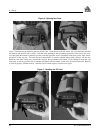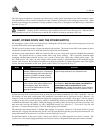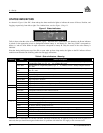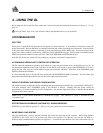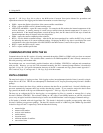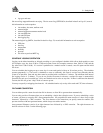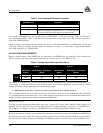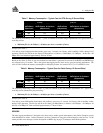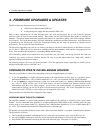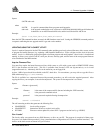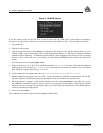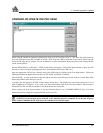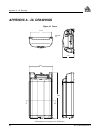
3 – Using the DL
DL™ User Manual Rev 3 29
• log types and rates
Site record logs support kinematic surveying. The site record log (SITELOGA, described in detail on Page 81) records
this information at each occupation:
• site number, site name, attribute code
• antenna height
• antenna height measurement method code
• site start GPS time
• site end GPS time
• data logging flag
The meteorological log (META, described in detail on Page 74) records this information at each occupation:
• GPS time
• data flag
• temperature
• humidity
• pressure
• file offset to previous MET log
SCHEDULE LOGGING OPERATION
Logging can be either immediate or delayed according to a pre-configured schedule which allows both repetitive events
(for example, every day from 15:00 to 17:00) and custom events (for example, tomorrow from 10:00 to 11:00, and the
day after from 17:00 to 18:00). If a session is predefined or a manual session is started, a new file opens and the initial
file closes.
You can schedule data logging on up to seven days in a one-week period, with up to 36 sessions per day. The scheduler
operates perpetually; i.e. if an event is scheduled to occur on a Monday, this event is serviced every Monday that the
system is in operation. Start and stop times must be provided with a resolution of 1 minute. The minimum time interval
per logging session is 5 minutes. If you do not provide file names in advance, a unique file name is automatically
generated for each set of recorded logs. Only one schedule can be active at any time. If there is sufficient time between
sessions, the DL will go into “sleep” mode to conserve power.
You may not specify overlapping time intervals. All scheduled entries rely on day of the week and UTC time references.
FILE NAME CONVENTION
You can either provide a name for each data file in advance, or allow DL to generate them automatically.
You can only provide a file name when you are scheduling a single data collection event. If you are scheduling a series
of events, you have to accept the DL’s auto-generated names. An acceptable file name consists of a base of up to eight
characters, followed by a .PDC extension. The first character of the name that you specify cannot be numeric; this
prevents conflicts with auto-generated names, which always start with a number.
Auto-generated filenames consist of an eight-character base followed by a .PDC extension. The eight characters are
derived as shown in Table 5 on the following page:



